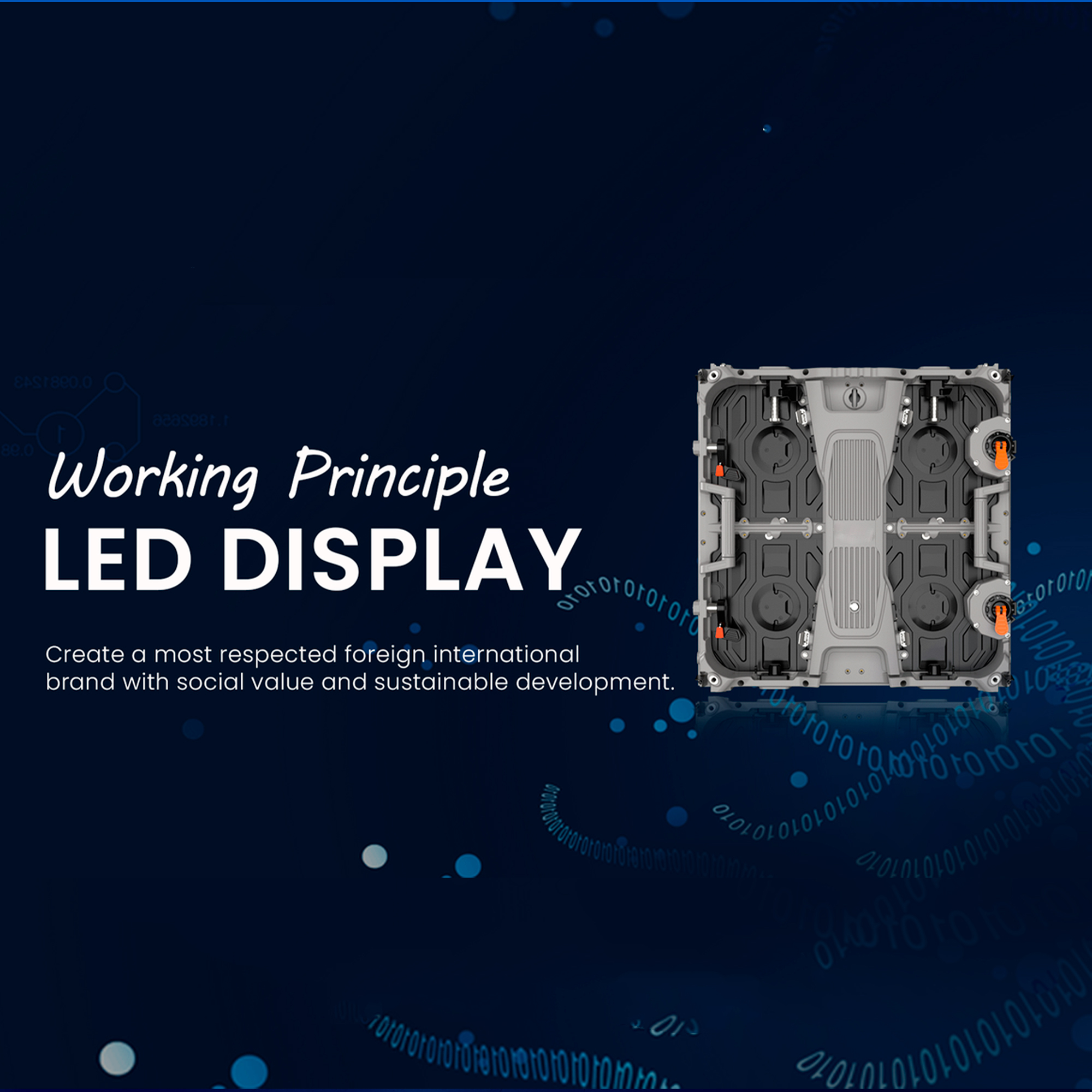
The Working Principle of LED Displays: Behind the Technology
LED (Light Emitting Diode) displays have become an integral part of modern advertising, communication, and information dissemination. Their vibrant visuals, energy efficiency, and versatility make them a preferred choice for various industries. But how exactly do LED displays work? Let’s explore the core components and working principles behind this revolutionary technology.
I. Core Components of an LED Display
-
LED Modules
- LED modules are the building blocks of LED displays. Each module comprises several LED lamp beads, which serve as the source of light and color.
-
Control System
- The control system acts as the brain of the LED display, processing input signals and translating them into visual content. It manages color, brightness, and refresh rate.
-
Power Supply
- The power supply unit ensures a consistent flow of electricity to the LED modules and the control system, enabling stable performance.
-
Cabinet and Structure
- The cabinet holds the LED modules, providing protection and ensuring structural stability. Outdoor cabinets often have weatherproofing features to withstand harsh conditions.
II. The Working Principle of LED Displays
-
Pixel Composition
- An LED display is made up of tiny pixels, each formed by three LEDs: red, green, and blue (RGB). By adjusting the intensity of these colors, millions of hues can be generated.
-
Data Processing
- The control system receives visual data from a media source (e.g., a computer or video processor).
- The data is processed and converted into electrical signals that correspond to the desired image or video.
-
Light Emission
- When an electrical current passes through the LED lamp beads, the diodes emit light. This phenomenon is known as electroluminescence.
-
Dynamic Refreshing
- The control system continuously refreshes the display by updating the content at high speeds, ensuring smooth visuals without flickering.
III. Advantages of LED Display Technology
-
High Brightness
- LED displays can achieve exceptional brightness levels, making them suitable for both indoor and outdoor use.
-
Energy Efficiency
- LEDs consume less power compared to traditional display technologies, reducing operational costs.
-
Durability
- LED components are highly durable, offering a longer lifespan and resistance to environmental factors like heat, moisture, and dust.
-
Flexibility
- LED displays can be customized in various shapes and sizes, from small signage to massive outdoor billboards.
IV. Applications of LED Displays
- Advertising and Marketing: Outdoor billboards, digital posters, and promotional displays.
- Sports and Entertainment: Stadium scoreboards, concert backdrops, and event screens.
- Retail and Hospitality: Digital menus, interactive displays, and hotel lobby signage.
- Public Information: Traffic signs, transportation hubs, and public safety alerts.
Conclusion
The working principle of LED displays highlights the innovation and engineering behind their vibrant visuals and reliable performance. With continued advancements in technology, LED displays are poised to remain at the forefront of digital communication and visual presentation.

